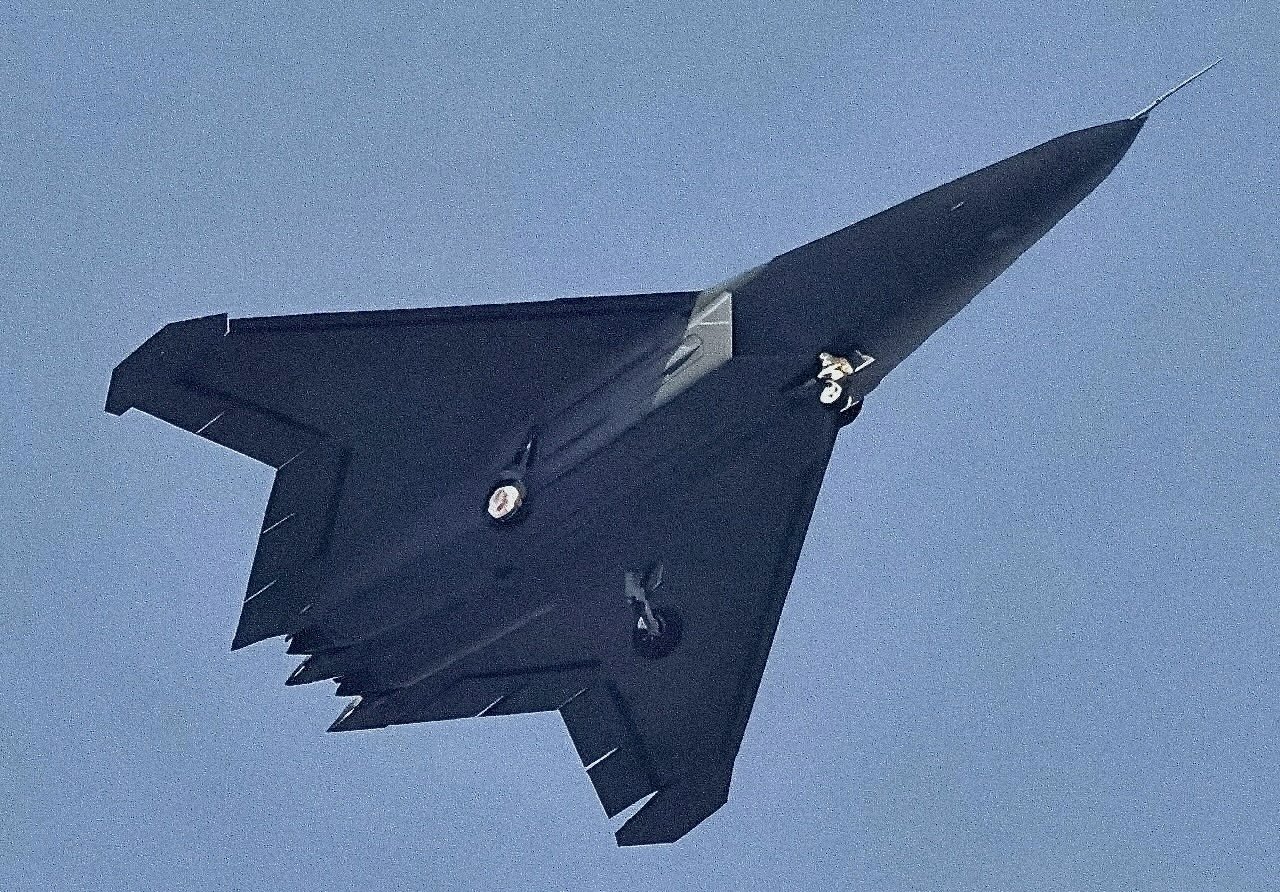Click Here to View This Page on Production Frontend
Click Here to Export Node Content
Click Here to View Printer-Friendly Version (Raw Backend)
Note: front-end display has links to styled print versions.
Content Node ID: 426637
In December 2010, China sent shockwaves through the West’s defense industry when the first images of the Chengdu J-20 stealthy interceptor appeared as it undertook taxi tests prior to its first flight in January 2011. Fourteen years later, China’s aviation industry has created another shock by revealing two prototypes of what appear to be sixth-generation fighters.
On December 26—the birthday of the People's Republic's founding father Mao Zedong—photos appeared on Chinese social media of both prototypes in a seemingly coordinated “unofficial” unveiling. The possible capabilities of both aircraft place them loosely in the category of the sixth-generation aircraft being developed in Europe and the U.S. As such, the new designs represent a significant advance in Chinese airpower potential in the coming years, and the likelihood that they might enter service some years before their Western counterparts being developed through initiatives such as Future Combat Air System, Next Generation Air Dominance, and Global Air Combat Program.
The types, speculatively identified as the J-36 and J-XDS (or J-50), are products of China’s two main fighter houses, Chengdu and Shenyang, respectively. They share certain similarities, with wide, flat, chined noses, sleek profiles, blended wings, and a lack of vertical tail surfaces. The Chengdu aircraft employs a pair of split flaps on each wingtip that can be used asymmetrically for yaw control, whereas the J-XDS has swiveling wingtips to achieve the same effect. In both cases, these surfaces can be used symmetrically to act as air brakes.
Chengdu’s J-36 is a large aircraft, as evidenced from initial photographs depicting it in flight with a J-20S chase aircraft. It has three engines, with two fed by caret-shaped intakes located beneath the wings, and the central engine fed by a diverterless supersonic inlet mounted on the spine behind the cockpit. All three powerplants exhaust in a shrouded row. The wing is a double-delta diamond shape, with both leading- and trailing-edge control surfaces. The undercarriage units all have twin wheels, the main units having a tandem arrangement.
The adoption of the unconventional powerplant layout appears to be aimed at increasing internal capacity for fuel and weapons, with one large internal bay being able to accommodate long-range air-to-air and air-to-ground missiles. There are also two smaller bays.
Air Superiority Platform or Bomber?
Overall, the shape suggests that it is designed for high speed, low observability, long range, and carrying sizeable weapon loads. The operational role for such an aircraft has led to considerable speculation. While the U.S. Air Force leans towards the view that the J-36 is intended for the long-range air superiority role, others have speculated that it could be a regional bomber or a launch platform for long-range attack missiles. It has also been suggested that it could form the manned command and control hub for other aircraft—both manned and unmanned.
First noted flying with a J-16 chase aircraft, Shenyang’s twin-engined J-XDS is smaller and appears to be tailored for a fighter role. It features a cranked-arrow wing with two Vee-shaped diverterless supersonic intakes situated broadly level with the wing/fuselage joint, with a distinct “tunnel” between the engine trunks. The engines have two-dimensional thrust-vectoring nozzles.

As with the J-36, the design has internal ventral weapons bays. The J-XDS has a prominent electro-optical targeting system fairing beneath the nose, whereas a similar system is mounted in a flush installation between the radome and cockpit in the Chengdu design. The J-XDS has a twin nosewheel unit, with single wheels on the main landing gear.
In the first unofficial photographs to appear of the type, it was unclear if the J-XDS had a cockpit, leading to speculation that it was an uncrewed aircraft, but subsequent images reveal that it has a cockpit underneath a low-profile canopy. In addition to the moveable wingtips, the control surfaces comprise four trailing-edge surfaces on each wing, and full-span leading-edge flaps that are reportedly capable of being deployed asymmetrically.
Both J-36 and J-XDS have been mooted as having carrier operation potential, although this would seem to have more potential for the smaller J-XDS.